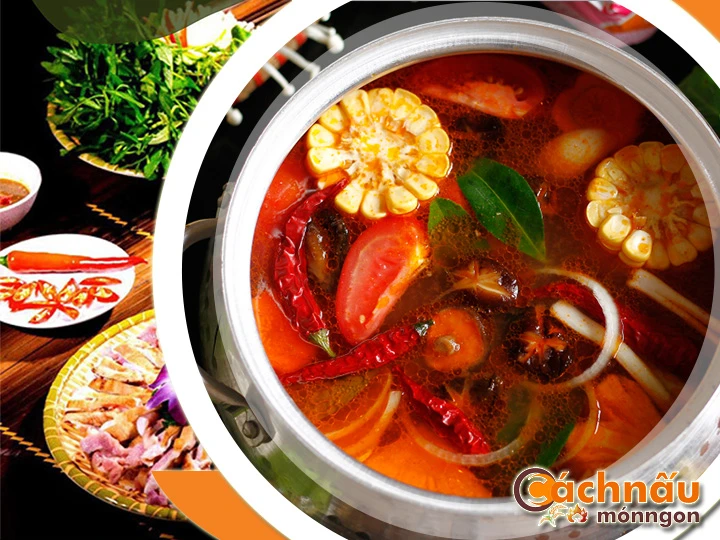Discover the Authentic Rabbit Hot Pot Ideas You Must Try - Lẩu thỏ
Discover the Authentic Rabbit Hot Pot Ideas You Must Try - Lẩu thỏ
Blog Article
Hot pot rabbit, a delectable and gastronomic treasure, has been beloved across diverse culinary traditions for centuries.

This comprehensive guide explores every single aspect you need to realize about rabbit hot pot, from its traditional beginnings to modern variations, health advantages, and comprehensive walkthrough for creating the excellent dining option at home. Whether you are a veteran chef or a aspiring chef, this guide will encourage and guide you to refine your talent of rabbit hot pot.
DIVING INTO THE LEGACY & CUSTOMS CONCERNING {BRAISED RABBIT DISH|HEARTY RABBIT MEAL|RABBIT HOT POT|RABBIT STEW|BUNNY CASSEROLE|RABBIT CUISINE|STEWED RABBIT
Rabbit hot pot stands as a special and historical dish with meaningful cultural connections in multiple countries. Its appeal stems not only from its rich flavor but also from its historical and cultural significance.
Rabbit hot pot represents a one-of-a-kind and historical dish with deep heritage in many areas. Its popularity stems not only from its delicious flavor but also from its past and cultural importance.
- Early Beginnings: Braised bunny dish originated in remote areas where bunnies were a abundant, wholesome food source. In traditional Chinese culture, it was a cherished meal, particularly during special occasions.
- Expansion Across Areas: In Western regions like the UK, rabbit was known for being part of hearty meals, transforming into modern versions of rabbit hot pot as the dish gained global appeal.
2. Rabbit Stew influencing Eastern Culinary Practices.
- China: Known as Sichuan's rabbit hot pot delicacy, rabbit hot pot is popular in the culinary traditions of Sichuan, celebrated for its robust flavors and loved during family gatherings.
- Throughout Korea and Japan: While less frequent, rabbit hot pot is occasionally enjoyed as a healing cuisine in Korea, or taking cues from Japanese nabemono in Japan, highlighting local greens and condiments.
- Vietnam: Although rabbit hot pot is not a common daily dish, it is celebrated during unique moments or in countryside where rabbit meat is plentiful. It is often made using distinctive spices such as aromatic lemongrass, spicy ginger, and fiery chili, paired with fresh vegetables like water spinach, green mustard, or aquatic greens. This dish is loved for its singular taste and healthy attributes, frequently relished at family and friend reunions.
Ở vùng đất Việt Nam, tuy không đích thực là món ăn dễ tìm thường ngày, nhưng nổi tiếng trong các sự kiện lớn hoặc ở các vùng xa xôi, nơi thịt thỏ dễ dàng tìm thấy. Thường được tẩm ướp với gia vị chính như sả, gừng tươi, và ớt cay, kết hợp với rau sạch như kangkong. Món ăn này được lòng nhiều người nhờ sự đặc sắc trong hương vị và dinh dưỡng dồi dào, thường là món ăn chính trong các bữa tiệc gia đình.
3. Rabbit Stew integral to European Culinary Traditions.
- In France: Often prepared as a robust stew with a red wine base, aromatic herbs including rosemary, and earthy roots. Rabbit hot pot is a cherished recipe for special celebrations.
- Within Italy: The dish called “Cacciatore”, featuring rabbit cooked with tomatoes and wine, is a foundation for modern rabbit hot pots.
MASTERING RABBIT HOT POT: RECIPES AND METHODS
Rabbit hot pot is a flexible dish that blends natural components, aromatic broths, and distinct techniques to create a rich and flavorful experience. Below are key steps into the core recipes and techniques to excel in rabbit hot pot.
The Fundamental Recipe for Rabbit Hot Pot
* Required Ingredients:
- 1 whole rabbit (sectioned)
- 4 cups of broth (bone broth)
- Vegetables (carrots)
- Spices and herbs (garlic)
- Seasonings (salt)
- Optional: noodles for serving
* Cooking Instructions:
- Getting the Rabbit Ready: Wash and section the rabbit into pieces. Marinate with a pinch of salt, pepper, and a drizzle of soy sauce for 30 minutes to boost the flavor.
- Make the Broth: Heat a pan with a bit of oil. Fry minced garlic and ginger until golden. Add your selected stock and bring it to a simmer.
- Add the Rabbit: Add the rabbit pieces into the pot and let them cook slowly on a low flame for 30-40 minutes until tender.
- Add Vegetables: Add your chosen vegetables and cook until they are softened but still bright.
- Present: Transfer the hot pot to a portable stove. Serve with accompaniments and add-ons such as rice or noodles.
Mastering Rabbit Hot Pot Techniques
- Marination:
. Marinate the rabbit with a mixture of salt, pepper, and seasonings to intensify its natural flavor.
. For more richness, use wine or a mix of fragrant herbs.
- Building Layers of Flavor:
. Start by simmering the rabbit in the broth to lẩu thịt thỏ draw out its rich flavor.
. Introduce vegetables step by step based on their cooking times.
- Perfect Timing:
. Avoid cooking too long the rabbit, as it can become tough.
. Test for readiness by checking if the meat falls off the bone.
- Broth Adjustments:
. Fine-tune the broth by adding extra herbs as needed.
. Experiment with different types of broths, such as herbal-infused variations.
Pro Tips for Rabbit Hot Pot
- Quality Matters: Always choose fresh rabbit meat and in-season greens for the top flavor.
- Balance Flavors: Be mindful of the sweetness in the broth. Taste and adjust frequently during cooking.
- Dipping Sauces: Offer a range of sauces like garlic-chili oil or soy-based dips to enrich the dining experience.
- Visual Appeal: Use a communal pot or serve the hot pot as a focal point to promote sharing.
By mastering these cooking techniques, you can make a rabbit hot pot that’s both flavorful and visually appealing, making it a star attraction for any celebration or dining experience.
Report this page
